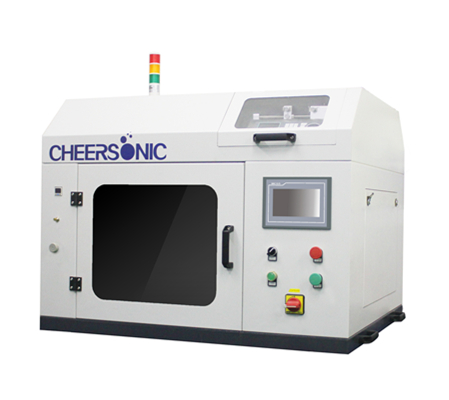Fuel Cell Catalyst Coating
A fuel cell works much like an electric battery, converting chemical energy into electrical energy using the movement of charged hydrogen ions across an electrolyte membrane to generate current. There they recombine with oxygen to produce water – a fuel cell’s only emission, alongside hot air.

Although less efficient than electric batteries, today’s fuel cells compare favourably with internal combustion engine technology, which converts fuel into kinetic energy at roughly 25 per cent efficiency. A fuel cell, by contrast, can mix hydrogen with air to produce electricity at up to 60 per cent efficiency.
Fuel cell catalyst coating systems are particularly suitable for these challenging applications by creating highly uniform, repeatable and durable coatings. From R&D to production, our anti-clogging technology can better control coating properties, significantly reduce material usage, and reduce maintenance and downtime. Ultrasonic spraying of other metal alloys, including platinum, nickel, iridium and ruthenium-based fuel cell catalyst coatings of metal oxide suspensions, can be used to manufacture PEM fuel cells, polymer electrolyte membrane (PEM) electrolyzers, and DMFC (direct methanol fuel). Battery) and SOFC (Solid Oxide Fuel Cell) can maximize load and battery efficiency.
Ultrasonic Fuel Cell Coating Video
About Cheersonic
Cheersonic is the leading developer and manufacturer of ultrasonic coating systems for applying precise, thin film coatings to protect, strengthen or smooth surfaces on parts and components for the microelectronics/electronics, alternative energy, medical and industrial markets, including specialized glass applications in construction and automotive.
The Company’s solutions are environmentally-friendly, efficient and highly reliable, and enable dramatic reductions in overspray, savings in raw material, water and energy usage and provide improved process repeatability, transfer efficiency, high uniformity and reduced emissions.
Cheersonic’s growth strategy is focused on leveraging its innovative technologies, proprietary know-how, unique talent and experience, and global reach to further develop thin film coating technologies that enable better outcomes for its customers’ products and processes. For further information, visit https://www.cheersonic-liquid.cn/en/.
- Get link
- X
- Other Apps
- Get link
- X
- Other Apps

Comments
Post a Comment